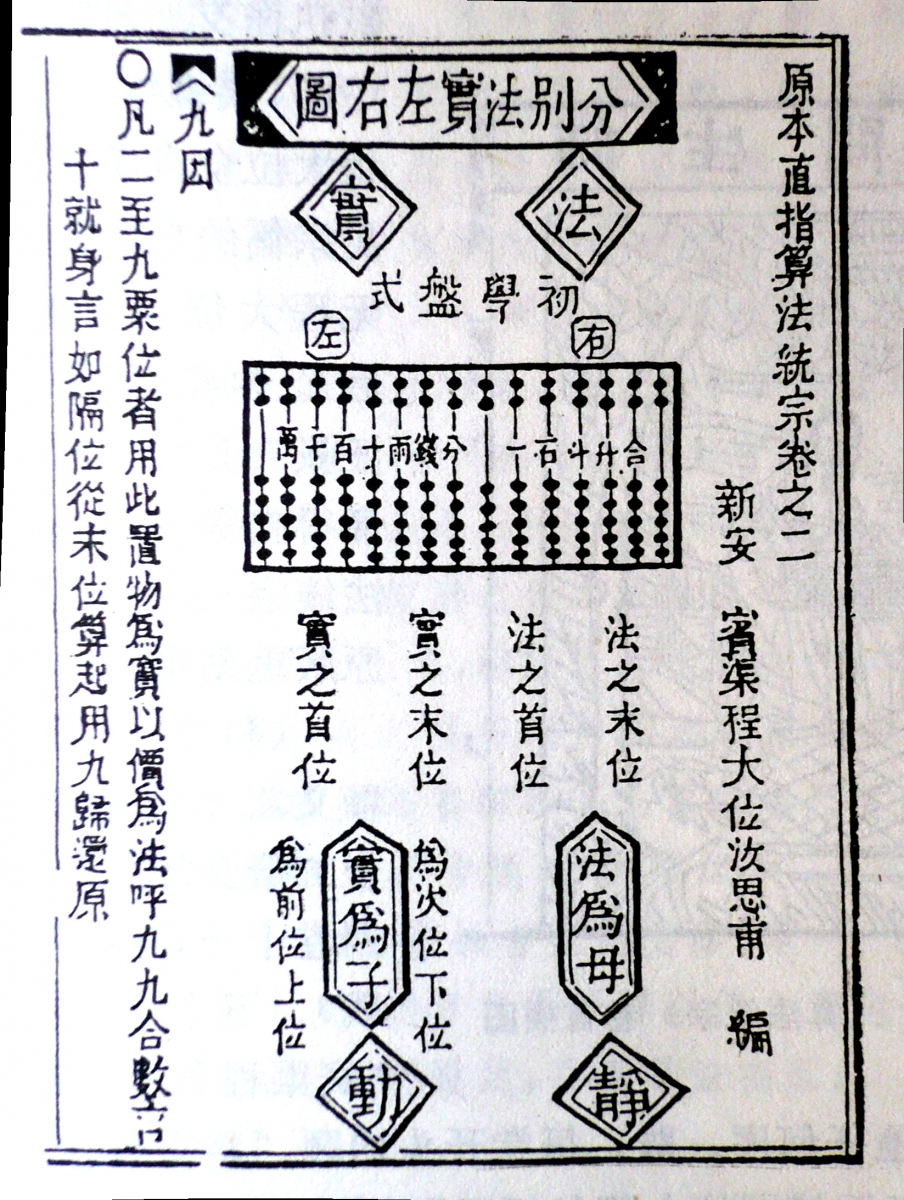- About MAA
- Membership
- MAA Publications
- Periodicals
- Blogs
- MAA Book Series
- MAA Press (an imprint of the AMS)
- MAA Notes
- MAA Reviews
- Mathematical Communication
- Information for Libraries
- Author Resources
- Advertise with MAA
- Meetings
- Competitions
- Programs
- Communities
- MAA Sections
- SIGMAA
- MAA Connect
- Students
- MAA Awards
- Awards Booklets
- Writing Awards
- Teaching Awards
- Service Awards
- Research Awards
- Lecture Awards
- Putnam Competition Individual and Team Winners
- D. E. Shaw Group AMC 8 Awards & Certificates
- Maryam Mirzakhani AMC 10 A Awards & Certificates
- Two Sigma AMC 10 B Awards & Certificates
- Jane Street AMC 12 A Awards & Certificates
- Akamai AMC 12 B Awards & Certificates
- High School Teachers
- News
You are here
Reflections on Chinese Numeration Systems: Transition to the Abacus
While the pedigree of achievements with rod numerals was impressive, the knowledge and understanding of the numeration system was limited to a small number of specialized scholars. By the time of the Yuan Dynasty (1206–1368), commercial considerations necessitated a computing device that was faster and more popular than computing rods, one that was less complex in its conception and more mechanical in its required working process. To meet this need, the bead abacus, or suanpan, was developed. Its basic principles were directly derived from the computing rods and board. The earliest illustration of this device can be found in the 1592 Suan fa tong zong (General Source of Computational Methods), compiled by the arithmetician Cheng Dawei (1533–1606). On the Chinese abacus, columns of seven beads are divided into two groups comprised of 2 five-counters, or Heaven beads, and 5 unit counters, or Earth beads.
Figure 9. A Ming dynasty suanpan as shown in a then-contemporary text. Wikimedia Commons.
Thus, the Chinese abacus is the terminal product of a two-thousand-year-old computing tradition that began with the fingers of the human hand as in the ideogram at the beginning of this article, moved to a set of computing rods, and finally ended with a fixed frame containing columns of vertically-movable beads. This computing device dominated Chinese mathematics calculation from the time of the early Ming Dynasty (1368–1644 CE) well into the era of Mao Zedong in the 1960s. During this period, all Chinese school children performed finger exercises to learn the ‘art of the beads’ and become proficient on the abacus. Now, these children use an electronic hand calculator.

Figure 10. A depiction of an abacus being used. The image is from a 1758 edition of the Suan fa tong zong. It is entitled “Discussions on difficult problems between master and pupil.” This illustration, in various forms, was used in earlier Chinese texts at least as early as 1592. Waseda University Library.
Frank J. Swetz (The Pennsylvania State University), "Reflections on Chinese Numeration Systems: Transition to the Abacus," Convergence (February 2022)





